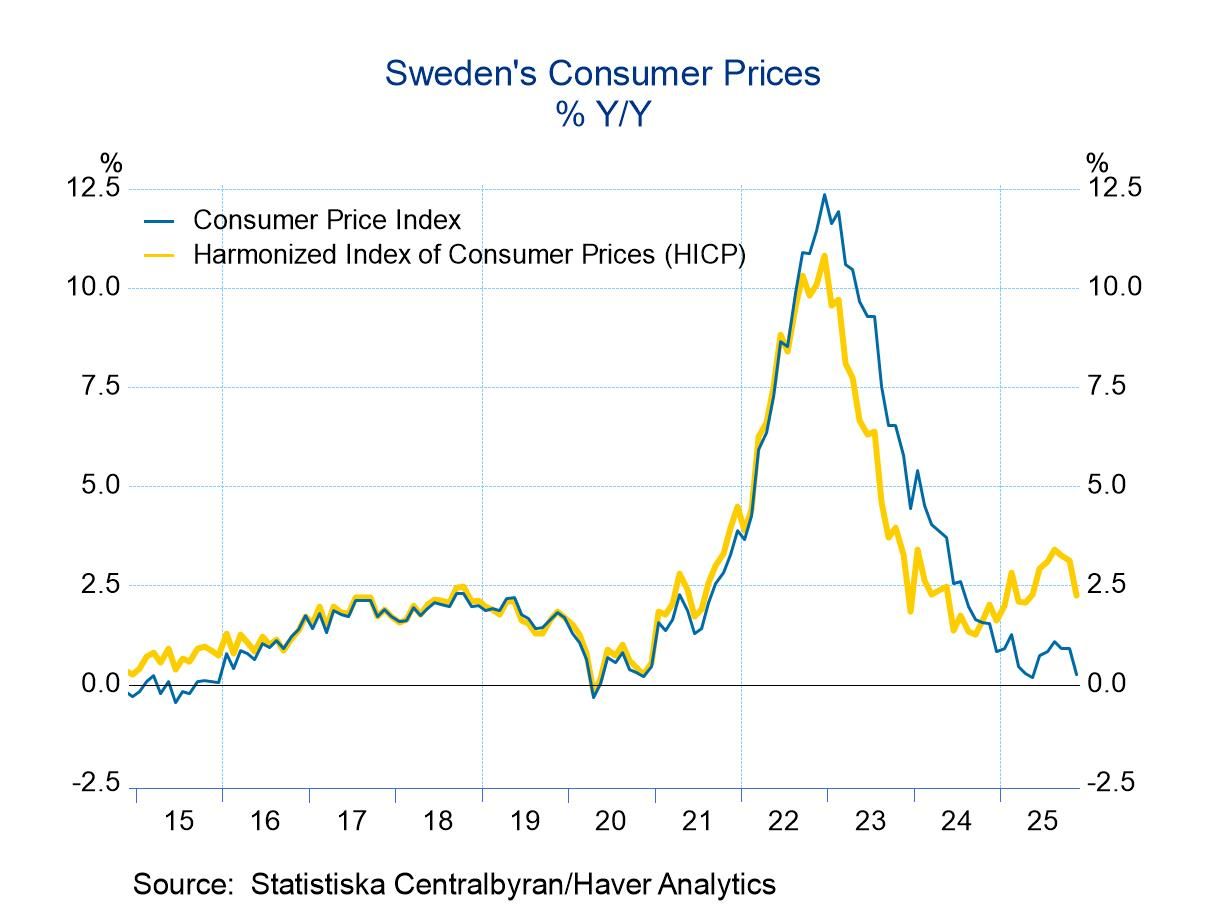 Global| Sep 30 2022
Global| Sep 30 2022EMU HICP Tops 10% Over 12-months

Inflation in the Euro Zone continues to move ahead fast enough to churn up a cloud of dust. In September, the flash HICP for the monetary union rose by 1.1% taking the 12-month increase up to a 10% pace underlining the problems of inflation that lingers in the European Monetary Area. The September figure was an escalation from 0.6% increase in August in a 0.7% increase in July. However, all those numbers are excessive compared to the inflation target of around 2% at the ECB runs.
Sequentially inflation's trend is still somewhat ambivalent at a 9.7% annual rate over 3-months, up from an 8.3% annual rate over 6-months but that's down from the 10% annual rate over 12-months. The trend for inflation is not cemented, however, these three growth rates for prices are all exceptionally high and the 3-month inflation rate does exceed the 6-month inflation rate leaving little for optimism as far as the inflation trend is concerned.
In Germany, the inflation rate rose by 2.4% in September from a 0.8% increase in August and after a 0.6% increase in July. The sequential growth rates for Germany show a 16.2% annual rate over the recent 3-months up from a 10.6% pace over 6-months and that compares to an 11% annual rate over 12-months. Inflation in Germany has really heated up and stayed hot.
Some deceleration outside Germany For France, inflation was flat in September; it rose by 0.1% in August, and by 0.5% in July. The sequential growth rates have disinflation in play with prices rising at a 6.2% pace over 12-months, falling off to a rise at a 5.3% pace over 6-months and down to a pace of 2.5% over 3-months. France shows clear deceleration in the pace of headline inflation.
Prices in Italy rose by 0.6% in September, the HICP index gained 1.2% in August and 0.2% the month before that, in July. Italian sequential inflation also is deflating as annual rates of increase progress from a 9.6% pace over 12-months to a 9% pace over 6-months to an 8.4% annual rate over 3-months.
Spanish prices backtracked with the HICP price index falling by 0.5% in September after rising 0.3% the month before and 0.9% the month before that in July. Sequentially, Spanish inflation is also decelerating; it cooks at a 9.3% annual rate over 12-months but then slides to 4.3% pace over 6-months and runs at a 3.2% annual rate over the most recent 3-month period.
Environmental factors Apart from the headline and, apart from Germany, there are clear signs of inflation decelerating in the European Monetary Union. And that's probably because growth is slowing down and because there are concerns about energy availability as well as uncertainty over the ongoing war in Ukraine. There are lots of things to worry about to undermine confidence. Consumer confidence has weakened sharply in countries that have released early consumer confidence figures. Most importantly, commodity price pressures are easing. The situation in Europe is difficult and we also see it in the currency market where the dollar has been rising strongly against the European currency, the euro, as well as against the British pound-that has its own special problems.

The PCE inflation report released for US today joins the crowd of countries reporting inflation statistics that remain difficult on the inflation front. US inflation is high even though energy prices are coming down. US core inflation continues to be stuck and elevated. There are plenty of challenges, too, because of ongoing supply issues.
Deceleration trends in Europe may be less than they seem Unfortunately, the core statistic for Italy and the ex-energy trends for Germany do not support the decelerating headline trends that other countries are displaying. That's another way of saying that the easy progress on inflation is being made as oil prices and other commodity prices slide but core prices are proving to be sticky. In Italy, despite the headline deceleration, the core rate rises at a 5.5% annual rate over 12-months, at a 7.9% annual rate over 6-months and dips only to a 7.6% annual rate over 3-months. In Germany, excluding energy, leaves the ex-energy pace of inflation up by 6% over 12 months, up at a 7.8% annual rate over 6-months and up at an 11% annual rate over three months. The good news embedded in the headline trends the individual countries may be illusory.
Robert Brusca
AuthorMore in Author Profile »Robert A. Brusca is Chief Economist of Fact and Opinion Economics, a consulting firm he founded in Manhattan. He has been an economist on Wall Street for over 25 years. He has visited central banking and large institutional clients in over 30 countries in his career as an economist. Mr. Brusca was a Divisional Research Chief at the Federal Reserve Bank of NY (Chief of the International Financial markets Division), a Fed Watcher at Irving Trust and Chief Economist at Nikko Securities International. He is widely quoted and appears in various media. Mr. Brusca holds an MA and Ph.D. in economics from Michigan State University and a BA in Economics from the University of Michigan. His research pursues his strong interests in non aligned policy economics as well as international economics. FAO Economics’ research targets investors to assist them in making better investment decisions in stocks, bonds and in a variety of international assets. The company does not manage money and has no conflicts in giving economic advice.






